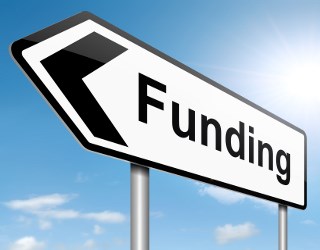 Pharmaceutical & Medical
Defining the role of the private sector in achieving effective refractive error coverage targets in the Western Pacific
Pharmaceutical & Medical
Defining the role of the private sector in achieving effective refractive error coverage targets in the Western Pacific
Defining the role of the private sector in achieving effective refractive error coverage targets in the Western Pacific
Defining the role of the private sector in achieving effective refractive error coverage targets in the Western Pacific has been closed on 09 Feb 2022. It no longer accepts any bids. For further information, you can contact the United Nations Capital Development Fund
Bellow, you can find more information about this project:
Location: Philippines
General information
United Nations Capital Development Fund
Pharmaceutical & Medical
Closed
Timeline
26 Jan 2022
09 Feb 2022
Not available
Contacts
Thu Ha Le
Description
Purpose of the APW
The Management of Noncommunicable Diseases (MND) unit of the World Health Organization Western Pacific Regional Office (WPRO) is looking for an individual/institution to provide technical expertise to WHO in conducting a regional review for diabetes prevalence, supporting health systems and policies, supporting infrastructure, diabetic eye and foot care, and other diabetes related services in the Western Pacific Region, and establish an optimized approach for further work in the future.
Background
Globally, it is estimated that at least 2.2 billion people have a vision impairment, and of these, at least 1 billion people have a vision impairment that could have been prevented or is yet to be addressed. Of the many eye conditions that can cause vision impairment or blindness, the most common are refractive errors, cataracts, glaucoma, diabetic retinopathy, and age-related macular degeneration.
Uncorrected refractive errors are the leading cause of vision impairment amongst children and adults. There are different types of refractive error; namely, myopia (short-sightedness), hyperopia (long-sightedness), presbyopia (difficulty seeing objects at near distance with increasing age), and astigmatism. Myopia is the most common refractive error globally, and uncorrected myopia significantly impacts academic performance in children and quality of life throughout adulthood. Uncorrected myopia also poses a considerable financial burden, with an estimated annual global productivity loss of US$ 244 billion.
Refractive error is an important and growing problem in the Western Pacific Region. It is the leading cause of moderate to severe vision impairment in Mongolia (41.9%) and Fiji (59.2%), and it is the second leading cause of moderate to severe vision impairment in all other countries. In some countries in the Western Pacific between 70% and 80% of older adults who have refractive error do not have spectacles. These figures do not take into account the growing prevalence of refractive errors among children and younger adults in the region. China has one of the highest rates of childhood myopia in the world, affecting as many as 84.6% of 17-year-old students. Complications of high myopia are also emerging as a major cause of new cases of blindness in the Western Pacific Region.
In 2021 the World Health Assembly endorsed a global target for effective coverage of refractive errors (eREC) – namely, a 40 per cent increase in coverage of refractive errors by 2030. Key challenges in achieving this target include the ability to provide services for underserved populations and ensuring quality service delivery. In the 2019 WHO World Report on Vision, Dr Tedros Ghebreyesus acknowledges that public and private sectors must work together to provide the long-term investment and management capacity to scale up integrated people-centred eye care. In line with this, a recent Lancet Global Commission for Eye Health states that “the private sector represents a huge opportunity to bring refractive error services (and primary eye care more broadly) closer to communities. Indeed, given the magnitude of uncorrected refractive error globally, eye health cannot be addressed as part of universal health coverage without a major contribution from the private sector”.
Planned timelines (subject to confirmation)
- Start date: 1 March 2022
- End date: 31 August 2022
- Total duration: 6 months
Requirements - Work to be performed
The service contractor will be supervised by the MND Coordinator and NCD Technical Officer, Division of Programmes for Disease Control, WHO WPRO and is expected to perform the following:
- • Gain insights into the status quo of the private sector involvement in the delivery of refractive error (and eye care) services in the Western Pacific region
- • Gain insights into challenges and opportunities to achieve the eREC target through joint public and private sector efforts
- • Describe the role(s) that the private sector could play in achieving the eREC target in the Western Pacific
- • Communicate the proposed role of the private sector and the pathway to achieve this with relevant stakeholders across the region, using a variant of effective communication tools.
Requirements - Planning
Outputs:
Deliverable 1.1: Stakeholder mapping: Identify multi-sectoral experts from the Western Pacific Region and beyond. This should include eye care service providers, decision makers, non-state actors, and representatives from different private sector groups relevant to this topic.
Deliverable 1.2: Interview and focus group discussions (remote): Hold interviews and focus group discussions with relevant stakeholders to:
- Clearly define the parameters within which the proposed pathways to eREC will operate (e.g., definition of private sector in eye health, measures of success, timeframe to be covered by white paper, etc.)
- Begin to describe the challenges and opportunities for involvement of the private sector in achieving the eREC target
- Identify and prioritise gaps where existing data and literature review can support the enablement of this think tank
Deliverable 1.3: Evidence review: Conduct an evidence review that validates, challenges, and augments the think tank’s discussion. This will likely include:
- A review of the status quo of the private sector role in the delivery of refractive error (and eye care services more broadly) in the Western Pacific region, with examples of good practice
- A mixed survey model that collects and explores the perspectives of people with refractive error (corrected and uncorrected), health care providers (from the public and private sectors), and from the private sector beyond the direct provision of services. This will create a three-dimensional perspective on where the challenges are and, more importantly, identify the role and prioritisation of private sector led initiatives and programmes (e.g., training, education, distribution, pricing, generation of demand, etc.)
Deliverable 1.4: Final expert consultation (remote): Hold consultations with the experts:
- Discuss and translate the findings from the evidence review
- Define the role of the private sector in achieving the eREC target in the Western Pacific
- Describe the pathway(s) and objectives for meaningful engagement of the private sector in the provision of equitable refractive error services in the Western Pacific Region.
Deliverable 1.5: Report: Develop and disseminate a report, which will outline findings from this initiative. Importantly, the white paper should:
- Briefly outline the status quo of the private sector involvement in the delivery of refractive error (and eye care services more broadly) in the Western Pacific region
- Briefly summarize the findings from the review of challenges and opportunities
- Describe the pathways(s) to achieve meaningful
- Describe the pathway(s) to achieve meaningful engagement of the private sector – at the regional and country level – to achieve the eREC target
- Set out objectives that draw upon private sector inclusion for achieving the eREC target in the Western Pacific, along with key metrics of success
Inputs
- • Stakeholder mapping
- • Interviews and focus group discussions
- • Review of the relevant evidence
- • Coordinate final expert consultation
- • Develop final report
Methods
- • Desk review of peer-reviwed and grey literature
- • Interviews and focus group discussions with key informants who may be health professionals, clinicians, ministry of health officials, civil society organisations, and others
- • Expert consultation
Scope of work: Regional review and overview and preparation of paper describing opportunities for private sector engagement and role of the private sector to aachieve effective refractive error coverage in the Western Pacific Region
Activity Coordination & Reporting
- Technical Officer:
- Dr Elick Narayan, Technical Officer, DDC/MND
- For the purpose of: Technical supervision and instructions - Reporting
- Administrative Officer:
- Dr Changgyo Yoon, PMO, DDC
- For the purpose of: Contractual and financial management of the contract
Characteristics of the Provider
Education
- • Essential: The contractual partner should include individuals with Masters' degree or higher from a recognised university (may include public health, social sciences, and business and economics degrees).
- • Desirable: Formal training in noncommunicable diseases and/or eye health care (or related field) strongly preferred.
Experience
- • Minimum of seven years’ work experience in public health at national and international level.
- • Experience driving policy dialogues or similar with cross-sectoral stakeholders and the private sector are strongly preferred
- • Experience working in the area of non-communicable diseases (especially eye health) policy and programmes strongly preferred.
- • Working knowledge of one or more countries in the Western Pacific Region would be an advantage.
Skills/Technical Skills and Knowledge
- • Data collection, compilation, and visualization skills
- • Communications and interview skills
- • Writing skills
Competencies
- • Technical Expertise
- • Communication
- • Respecting and Promoting Individual and Cultural Differences
- • Moving Forward in a Changing Environment
- • Producing Results
Additional Information
Place of assignment:
The contractual partner will be working remotely to perform the tasks related to this APW but will require interaction with the Technical Unit (MND) and stakeholders from across the Western Pacific Region on the development of the deliverables.
APPLICATIONS
Qualified and interested specialists should submit the following documents to the Supply Officer through WP RO UNGM at < [email protected] > by 9 February 2022 1700 GMT+8 Manila
- • Company Profile {for institutional applications}
- • Technical proposal, with the following accomplished forms as indicated in the attached Request for Proposal (RFP)
- o Annex 2: Confidentiality Undertaking
- o Annex 3: Vendor Information Form
- • Financial proposal
Please use Tender Notice No. WPRO/2022-01/DDC_HSI/165477 as subject to all submission. Only successful candidates will be contacted.
Last day of receiving tender queries: 2 February 2022
Receive Daily Tenders and Grants notifications
Subscribe nowFeatured tenders
-
 Tender
14 Feb 2022
Philippines
Philippines National Community Driven Development Program
DSWD-NCDDP- FO IX
Tender
14 Feb 2022
Philippines
Philippines National Community Driven Development Program
DSWD-NCDDP- FO IX
-
 Tender
04 Feb 2022
Philippines
CONSULTANT (Administration and Project Management)
United Nations Capital Development Fund
Tender
04 Feb 2022
Philippines
CONSULTANT (Administration and Project Management)
United Nations Capital Development Fund
-
 Tender
14 Feb 2022
Philippines
APW for T&CM GBT Tool Development
United Nations Capital Development Fund
Tender
14 Feb 2022
Philippines
APW for T&CM GBT Tool Development
United Nations Capital Development Fund
-
 Tender
14 Feb 2022
Philippines
Philippines National Community Driven Development Program
DSWD-NCDDP- FO VI
Tender
14 Feb 2022
Philippines
Philippines National Community Driven Development Program
DSWD-NCDDP- FO VI
-
 Tender
18 Feb 2022
Philippines
Philippines National Community Driven Development Program
DSWD-NCDDP- FO IX
Tender
18 Feb 2022
Philippines
Philippines National Community Driven Development Program
DSWD-NCDDP- FO IX
Get free access to our Tenders & Grants Database
Our service is free of charge and will always be
Join NowDonors
-
 Spanish Agency for International Development Cooperation
Spanish Agency for International Development Cooperation
-
 ASIAN INFRASTRUCTURE INVESTMENT BANK
ASIAN INFRASTRUCTURE INVESTMENT BANK
-
 DEPARTMENT FOR INTERNATIONAL DEVELOPMENT
DEPARTMENT FOR INTERNATIONAL DEVELOPMENT
-
 EUROPEAN SECURITIES AND MARKETS AUTHORITY PROCUREMENT
EUROPEAN SECURITIES AND MARKETS AUTHORITY PROCUREMENT
-
 INTERNATIONAL LABOR ORGANIZATION
INTERNATIONAL LABOR ORGANIZATION
-
 LUX-DEVELOPMENT
LUX-DEVELOPMENT
-
 SOUTHERN AFRICAN DEVELOPMENT COMMUNITY
SOUTHERN AFRICAN DEVELOPMENT COMMUNITY
-
 UNITED NATIONS VOLUNTEERS
UNITED NATIONS VOLUNTEERS
-
 US DEPARTMENT OF STATE
US DEPARTMENT OF STATE
-
 WORLD METEOROLOGICAL ORGANIZATION
WORLD METEOROLOGICAL ORGANIZATION